Stuart McRobert’s Beyond Brawn was a book that changed the way I work out forever. After reading the book I understood why I’d made no progress working out 4-5 times per week.
I was following the bodybuilding magazine workouts which were not designed for natural trainees such as me. Once I cut out all the needless volume and started focussing on a handful of compound movements things took off big time and I’ve not looked back since!
The man responsible for educating me was Stuart McRobert, which is why I’m delighted to introduce Stuart as our next guest here at Free Workout Plans For Busy People.com!
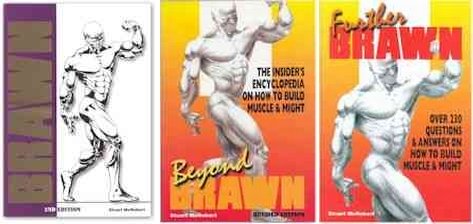
Skye: Hi Stuart, thanks for interrupting writing your latest book to talk with us today, it is much appreciated.
The Writer
Many people consider BRAWN and BEYOND BRAWN to provide some of the most complete weight-training information available. Your latest book BUILD MUSCLE, LOSE FAT, LOOK GREAT took you five years to complete and is four books in one. What’s different about this book?
Stuart: It shows a total beginner what to do, right from day one, in week-by-week detail.
BRAWN and BEYOND BRAWN didn’t cater for the beginner, and assumed some background in training. But all other trainees can also benefit greatly from BMLFLG. There’s extensive useable information in it that’s not in BRAWN or BEYOND BRAWN, and that’s suitable for trainees of all levels of ability and achievement.
Together, the three titles provide a tremendous education in strength training and bodybuilding.
Skye: Book two of BMLFLG provides 200+ pages on exercise technique. Are their different exercises covered compared to what’s in THE INSIDER’S TELL-ALL HANDBOOK ON WEIGHT-TRAINING TECHNIQUE?
Stuart: That section of BMLFLG is a total revision of the first and second editions of INSIDER’S, and with additional exercises. But that section, along with some further exercises, is now the third edition of INSIDER’S.
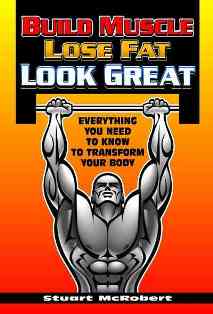
Skye: You edited HARDGAINER magazine for 15 years, and it provided valuable information for drug-free trainees. Why did you stop publishing it?
Stuart: I was losing some of my enthusiasm for publishing the magazine, and it had started to become a duty rather than a passion. Furthermore, before the internet really took off in the late 1990s, HARDGAINER was the primary source of abbreviated training primarily targeted at typical, drug-free trainees. But once the internet took off, multiple sources of that sort of information because available for free, so HARDGAINER lost its uniqueness.
Skye: You also wrote for a number of muscle magazines whose training methods and workouts only work for steroid users. As you are staunchly anti-steroids and only promote drug-free training methods, did you have to tone down some of your opinions?
Stuart: Yes, but I was still allowed to offer whatever training guidance I wanted to. In a couple of instances my writing was edited in a way I wasn’t happy with, and I discontinued writing for the publications involved.
Training Philosophy
Skye: Like my readers, you lead a very busy life. Did being a school teacher, magazine publisher and editor, writer and a family man mean that you had to train less often, or did you do it because it was the most optimal way to train?
Stuart: It was forced on me by the extreme demands of all those things — I had 70+ hour working weeks for many years, and two young kids at home.
I couldn’t train in any other way – it was the abbreviated way, or no way. Had I had a simpler lifestyle I would still have trained in an abbreviated manner, but not as abbreviated as what was imposed on me by circumstances.
Skye: You recommend a low training frequency for most trainees, even for mass gain phases. What do you think about the studies that indicate that hitting each body part twice per week is more effective for muscle gain?
Stuart: Frequency is a very important factor, but it’s related to volume and intensity of training.
I would prefer that someone train a bodypart twice a week, or three times every two weeks, rather than just once a week PROVIDED that adequate recovery is made between workouts.
I would prefer that someone trains with a lesser volume of sufficiently intensive training rather than a greater volume of it that would crush the individual and necessitate overly long rest periods between workouts. It’s a case of getting the balance of volume, intensity and frequency right, which is tricky and varies among individuals.
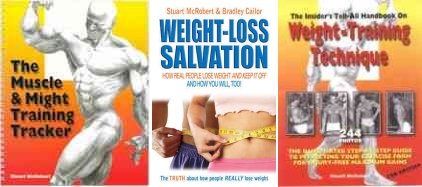
Skye: Do you still work out, and have you had to adapt your training as you’ve got older?
Stuart: Yes, and yes again. I’m 52 and now train primarily for health and fitness, rather than primarily for strength and size like I used to when I was young. I no longer train as heavily as I used to, and I no longer want to eat the quantity of food I’d need to sustain a 95-kilo body.
Skye: What’s the best gym you’ve ever trained in?
Stuart: Depends how you define “best.” As far as producing excitement, and for somewhere that pushed me especially hard, it was a gym in Liverpool during my college years.
But because that sort of enthusiasm is usually misapplied, like it was in my case, I wasted my time there — and thus wasted some of what should have been the best years of my life.
Appropriate, effective training is key. If that can be combined with a location that super motivates you to train hard and well, that would be perfect.
In my case, a much better location was the bare bones “gym” I first trained in, from when I was about 15, and for a few years. There were no big physiques there, and few sources of distraction.
I still made many mistakes — I was so young and poorly informed at the time — but I made fewer mistakes than I did at the later gym where there was such excitement, energy and distraction due to the outstanding physiques that trained there (drugs assisted, of course).
Knowing what to do that’s appropriate for the individual is the priority. Once you know that, you should be able to train well regardless of the type or standard of gym.
Nutrition
Skye:
You advocate less than 1g of protein per pound of bodyweight. This is often criticised as too low, especially for hardgainers. Do you recommend 1g per pound, and if so, why?
Stuart: A gram of protein per pound of bodyweight is probably adequate for most trainees, and I’ve often recommended that quantity for hard-training bodybuilders and lifters. And a little more may be helpful during periods of very intensive training.
The explanation for most bodybuilders’ poor progress doesn’t rest in insufficient protein. Protein is so heavily promoted in the training world that protein deficiency isn’t a common problem among serious trainees.
Skye: In BEYOND BRAWN you mention that you lost lots of muscle while following a vegan diet. Can vegans build muscle, or should they start eating meat if they’re serious about wanting to build muscle?
Stuart: I doubt that any drug-free, genetically typical vegan can build substantial new muscle mass, and most vegans probably won’t be able to build any new muscle.
Meat eating isn’t essential, but consuming animal protein is — and not just for people who want to build muscle. When I had my epiphany and stopped being a vegan, it was the addition of just two eggs a day to otherwise vegan fare that made a world of difference.
Its effect was like magic — one of the most memorable experiences of my life. I subsequently added dairy products and fish, but not meat.
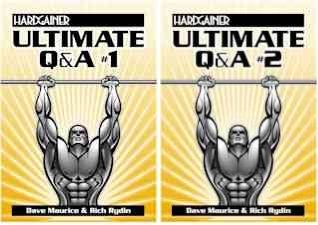
The “Hardgainer” Tag
Skye: The term “hardgainer” is now the recognised term for anyone who struggles to add muscle due to unfavourable genetics. It’s also misused by people who can’t gain muscle because their diets/workout plans are ineffective. Do you regret coining the term now?
Stuart: I didn’t coin the term. It was around for many years before I promoted it, but I may have given it more promotion than any other single individual.
If people misinterpret “hard gainer,” they will be handicapped. But if people interpret it like I promote it, they will be helped.
By recognising that you’re a genetically typical, drug-free bodybuilder — a hard gainer — you’re more likely to recognise that the training methods promoted by genetically gifted, drug-assisted bodybuilders are inappropriate to you.
Then, paradoxically, when hard gainers train properly they can make decent gains, and perhaps no longer consider themselves to be hard gainers.
Skye: You’ve written that you struggled to gain muscle in your youth during the 1970s. Was there ever any pressure for you to take steroids?
Stuart: No. I was naive, and believed the articles in the magazines of those days that said that steroids didn’t really make much difference, and that anyone with dedication could still make it in bodybuilding competition.
And I believed the deceitful bodybuilding champions who said they didn’t take steroids. But eventually I understood the truth, and it was a hard pill to follow initially because I’d been so naive for many years.
I was resolute about never being prepared to take performance enhancing drugs. So I was never tempted to use them even when I knew how essential they are for competitive bodybuilders in the modern era.
Bodybuilding
Skye: Do you still follow the bodybuilding scene? If so, you’ll be aware that mass is king and the biggest guys like Kai Greene win the Olympia every year. Where do you think bodybuilding will go next?
Stuart: I follow the bodybuilding scene in a general way, but don’t pay much attention to the competitions. (When I was young I paid great attention to competitions.)
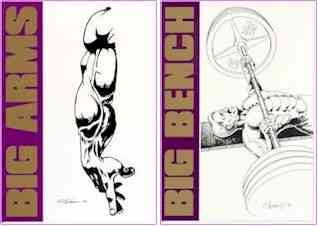
Some bodybuilders will continue to get even larger — the guys with the most stupendous genetics for bodybuilding, the most effective drug support, and tremendous dedication to training and related factors — and they will continue to win the biggest competitions, I would think.
Want More From Stuart?
Skye: Do you have any new projects in the pipeline?
Stuart: Yes. A new book on bodybuilding — different format to what I’ve written already. I think most bodybuilders will love it, and will benefit greatly from applying its instruction. I’m excited by the book. I should have it done by the end of this year.
Skye: How can readers stay in touch with you?
Stuart: Via
www.hardgainer.com
Return to the Interviews
Return to the Free Workout Plans For Busy People Homepage